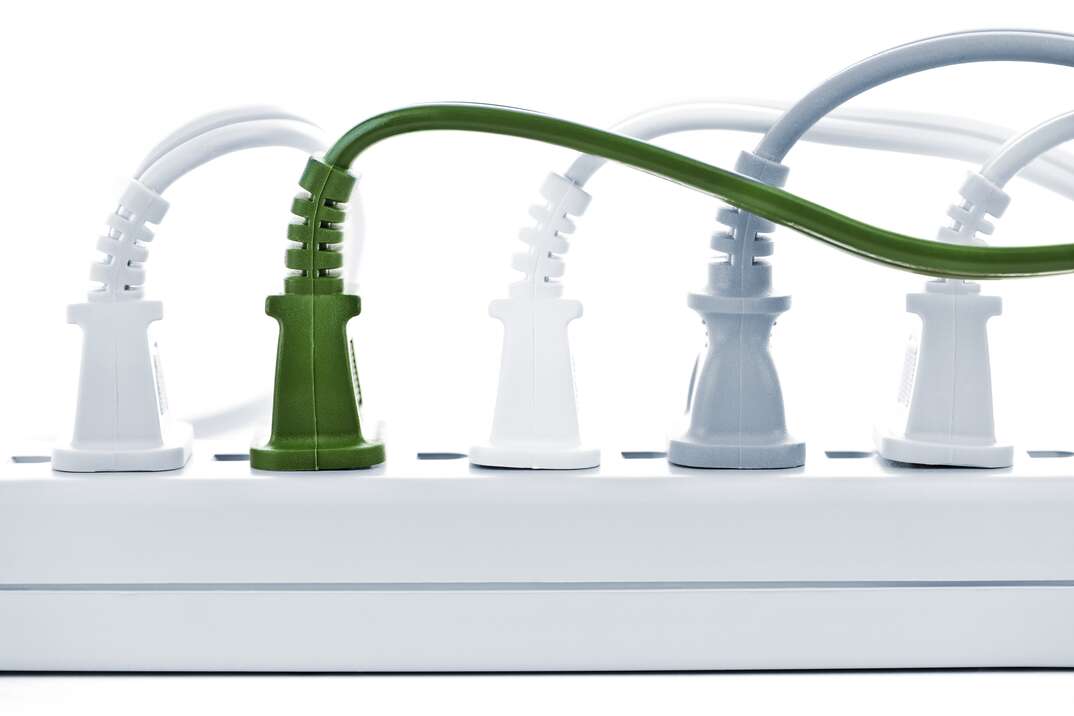- AppliancesElectriciansHVACLandscapingLocksmithPest ControlPlumbingRenovationRoofingT V RepairAll Home Improvement
- Car AccidentClass ActionCorporate LawCriminal DefenseDivorce LawEmployment LawFamily LawFinancial LawLegal AidMedical Injury LawyersMedical MalpracticeReal Estate LawWater Fire RestorationAll Legal
- InvestmentRetirementAll Finance
- Animal InsuranceAutoGeneral InsuranceHealth PolicyHome RentersAll Insurance
- DentalHealth SpecialistsAll Medical
- Animal CareVeterinaryAll Pets
- Auto GlassTowingAll Automotive
What Do Surge Protectors Do?

From gaming systems and charging devices to computers and big-screen TVs, electronic equipment has sensitive parts that can fall victim to a power surge. Fortunately, you can safeguard your electronics with a surge protector that acts as a buffer between your home's electrical system and your device.
A surge protector is a device designed to keep electronics, computing equipment and appliances safe from power surges that could destroy sensitive internal circuits. These devices plug into a wall outlet using a standard three-prong plug and feature a single outlet or strip of outlets for plugging in your electronics.
While a surge protector might look like a classic power strip, it serves a slightly different function. Power strips add capacity to your outlet, letting you plug in multiple devices at once, but they don't offer protection from sudden electrical surges.
Surge protectors are rated in joules, which is the amount of energy they can absorb. Devices with a higher joule rating are more powerful.
What Is Its Purpose?
The purpose of a surge protector is to keep electrical surges from disrupting or damaging electronics. A surge protector power strip with multiple plug outlets can protect multiple devices at once. You can plug almost any type of device into a surge protector, including:
- Televisions
- Computers
- Phone chargers
- Gaming systems
- Medical equipment
- Electronic voice assistants
During a power surge, your connected electronic devices may remain functioning as normal or turn off completely, depending on the source and level of surge. Surge protectors can wear down over time, so you should get a new one if yours has been through a significant surge or multiple smaller surges. Many newer surge protectors have an indicator light to let you know when it's time to swap in a new one.
How Do Surge Protectors Work?
Surge protectors work by measuring the voltage coming into the device from a wall outlet and blocking any above a safe threshold from reaching your device.
While surge protectors are effective against most common energy surges, they aren't perfect. A surge protector is ineffective against a direct lightning strike to your home because lightning produces so much energy that even the best device can't block or divert it all.
Brownouts, a drop in the voltage coming into your home, aren't affected by a surge protector, and these devices can't do anything in the case of a full electrical shutdown or blackout.
Because a home surge protector is designed to act as a buffer between your home's external energy source and your devices, it's best to plug it into an outlet close to where you tend to use or charge your devices. Avoid putting a surge protector in an area where it might be exposed to direct heat, moisture or physical damage.
More Related Articles
- How Do I Tell If an Electrical Issue Is Serious?
- Can One Bad Outlet Affect Others?
- How to Reset a GFCI Outlet
- What’s in My Electrician’s Van?
- 7 Ways to Save on Your Electric Bill
Buying a Surge Protector
In addition to the joule rating, here are a few other things to consider when choosing a surge protector.
Strip or Outlet Style
A surge protector outlet plugs directly into the wall and has one or more outlets on the surface for you to plug in your devices. A surge protector power strip has a cord that plugs into the wall outlet and a strip of outlets available for use.
The strip-style surge protector provides more flexibility in placement because you can place it anywhere the cord reaches, such as on the floor or a shelf. Because you shouldn't use a surge protector with an extension cord, models with a long cord and power strip work well if you have to place the device far away from the wall outlet.
The plug-in outlet-style surge protector is more compact, which saves space. Some surge protectors have inputs for USB cords in addition to standard three-prong outlets.
Clamping Voltage
The clamping voltage listed on a surge protector is the amount of voltage the device lets through before it starts to divert or block excess electricity. Lower numbers provide better surge protection, so look for devices with a rating of 400V or lower.
Response Time
A surge of energy through your power line can happen quickly, so you need a surge protector that shunts away that excess voltage as quickly as possible. Devices with a response time of under one nanosecond provide optimal protection from power surges.
Elocal Editorial Content is for educational and entertainment purposes only. Editorial Content should not be used as a substitute for advice from a licensed professional in your state reviewing your issue. Systems, equipment, issues and circumstances vary. Follow the manufacturer's safety precautions. The opinions, beliefs and viewpoints expressed by the eLocal Editorial Team and other third-party content providers do not necessarily reflect the opinions, beliefs and viewpoints of eLocal or its affiliate companies. Use of the Blog is subject to the
Website Terms and Conditions.The eLocal Editorial Team operates independently of eLocal USA's marketing and sales decisions.



